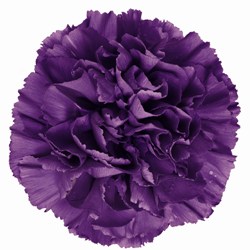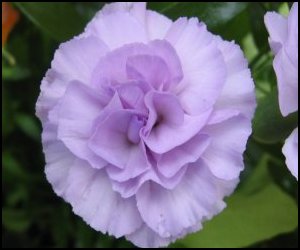All about Purple Carnations
Purple Carnations are one of my favourite flowers. OK a purple carnation is supposed to signify capriciousness (unlike pink carnations which signify longing and white carnations which signify pure love), and in France it's a traditional funeral flower. But no matter. They look so gorgeous does it matter what they signify?
This page is a hymn to the Purple Carnation.

The official name for carnations is Dianthus caryophyllus and it originates in the Near East. They've been grown for at least 2500 years and the natural bloom was a pinkish sweetly scented flower.
However horticulturalists have been creating all sorts of new varieties and colours. Most of the purple varieties available at the moment were created in Australia by Florigene, and come in shades of the palest mauve to a really deep dark purple.
Most good florists will stock the flower (they are usually grown in South America or Africa and flown in).
However, you can grow them yourself using the following method:
1. Get someone to send you a bouquet of purple carnations
2. Take a cutting - look to see if any of the flowering stems have side shoots. Gently break a side shoot off that is at least four inches long, and remove the leaves from the base.Then insert the cutting in pure sand, taking care that leaves don't touch the sand. Ensure the sand is damp.
3. After about 30 days you can transplant them into a pot or into your garden. The best outdoor planting time is April. They need a lot of sun-shine and the soil should be moist.
Carnations can also be grown from seed, but finding the seeds for purple carnations can be difficult.










